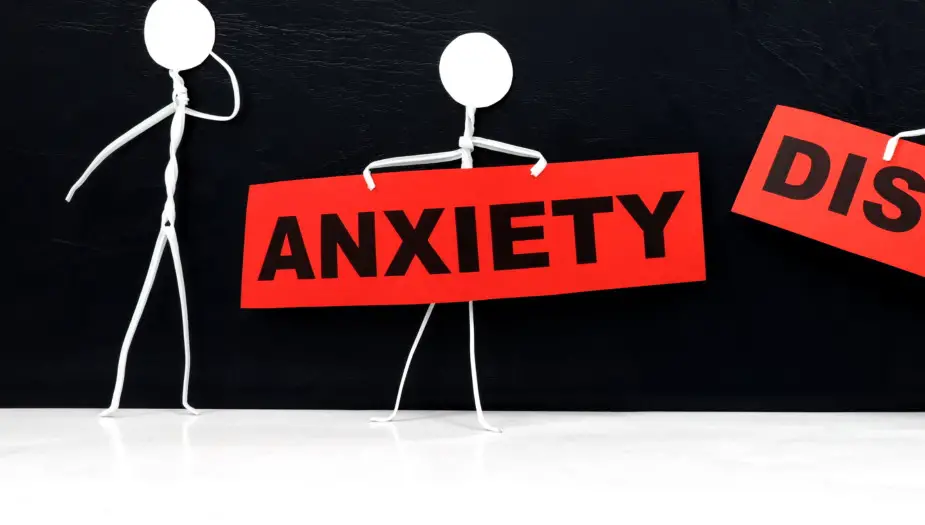Is red your favorite color, but you’re feeling anxious lately? Discover the surprising truth about the relationship between the color red and anxiety in our latest blog post.

Can the Color Red Cause Anxiety?
Red is the color of passion, power, and energy. It’s a bold and vibrant hue that demands attention and makes a statement. But, could this fiery shade also be responsible for triggering anxiety?
If you’ve been feeling uneasy lately, and you can’t put your finger on why, it might be time to consider the role that color plays in your life. As a color personality specialist and marketing genius, I’ve seen firsthand how color can affect people’s moods and behaviors. And the color red, in particular, is one that often elicits strong emotions and reactions.
We will examine how the color red is connected to anxiety, investigating the science of color psychology and the ways certain colors can create discomfort or even induce anxiety. Additionally, we will provide you with some practical advice and techniques for introducing red into your life in a manner that encourages positive emotions and diminishes stress.
So, if you’re a red lover who’s been feeling a little blue lately, keep reading to find out if the color red could be the culprit behind your anxiety. It’s time to get to the bottom of this colorful conundrum!
The Science of Color Psychology
Color psychology is the study of how colors affect our emotions, behaviors, and perceptions. It’s a field that’s been studied for decades, and there’s no doubt that color can have a powerful impact on our lives. When it comes to anxiety, research has shown that certain colors can trigger negative emotions and increase stress levels.
One study published in the Journal of Experimental Psychology found that red can actually impair performance on cognitive tasks, as it’s associated with danger and alarm. Another study found that exposure to red can increase heart rate and blood pressure, leading to feelings of anxiety and tension.
So, while the color red may be energizing and attention-grabbing, it can also have a downside when it comes to anxiety. It’s important to be aware of the potential effects of color on our mental health and well-being.
Red in Marketing and Advertising
As a marketing genius, I can tell you that red is one of the most commonly used colors in advertising and branding. It’s a color that’s associated with passion, excitement, and urgency, making it a popular choice for promoting sales and special offers.
But, the use of red in marketing can also have a downside. The color can create a sense of urgency and scarcity, leading consumers to feel stressed or anxious about missing out on a deal.
It’s important for marketers to be mindful of the potential effects of color on consumer behavior and to use it strategically to promote positive emotions rather than stress and anxiety.
Tips for Incorporating Red in Your Life
If you’re a fan of the color red but you’re worried about its potential effects on your anxiety levels, don’t worry! There are ways to incorporate the color into your life in a way that promotes positive emotions and reduces stress.
Here are a few tips to get you started:
- Use red accents in your home decor, such as throw pillows, curtains, or artwork.
- Wear red clothing or accessories to add a pop of color to your wardrobe.
- Incorporate red into your exercise routine, such as using a red yoga mat or wearing red workout clothes.
- Try incorporating red foods into your diet, such as tomatoes, cherries, or red bell peppers.
- Use red lighting in your home to create a warm and cozy atmosphere.
Remember, the key is to use red in moderation and to be mindful of its potential effects on your emotions and stress levels.
The Role of Personal Preference
While there’s no denying the potential effects of color on our emotions, it’s also important to remember that personal preference plays a role as well.
If red is your favorite color and it makes you feel happy and energized, then there’s no need to avoid it altogether. The key is to be aware of its potential effects and to use it in a way that promotes positive emotions and reduces stress.
At the end of the day, color is a personal choice, and it’s up to you to decide what works best for your mental health and well-being.
Seeking Professional Help
If you’re experiencing anxiety or other mental health issues, it’s important to seek professional help. While color can have an impact on our emotions, it’s not the only factor at play. A mental health professional can help you identify the root causes of your anxiety and provide you with the support and tools you need to manage it effectively.
Remember, there’s no shame in seeking help, and taking care of your mental health is essential for living a happy and fulfilling life.
